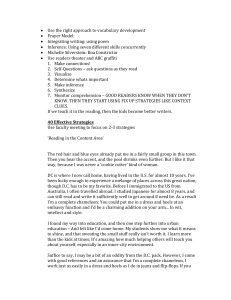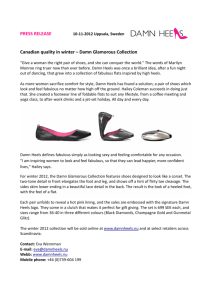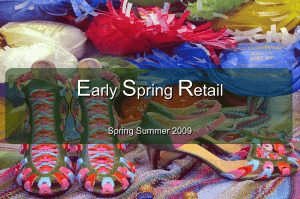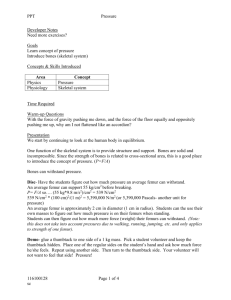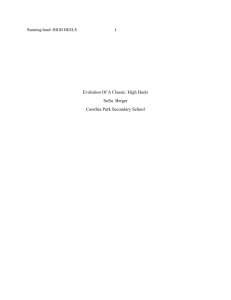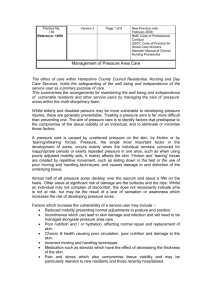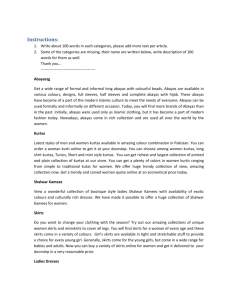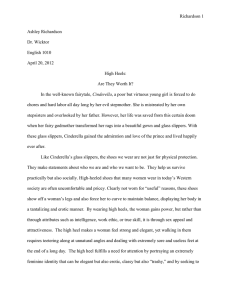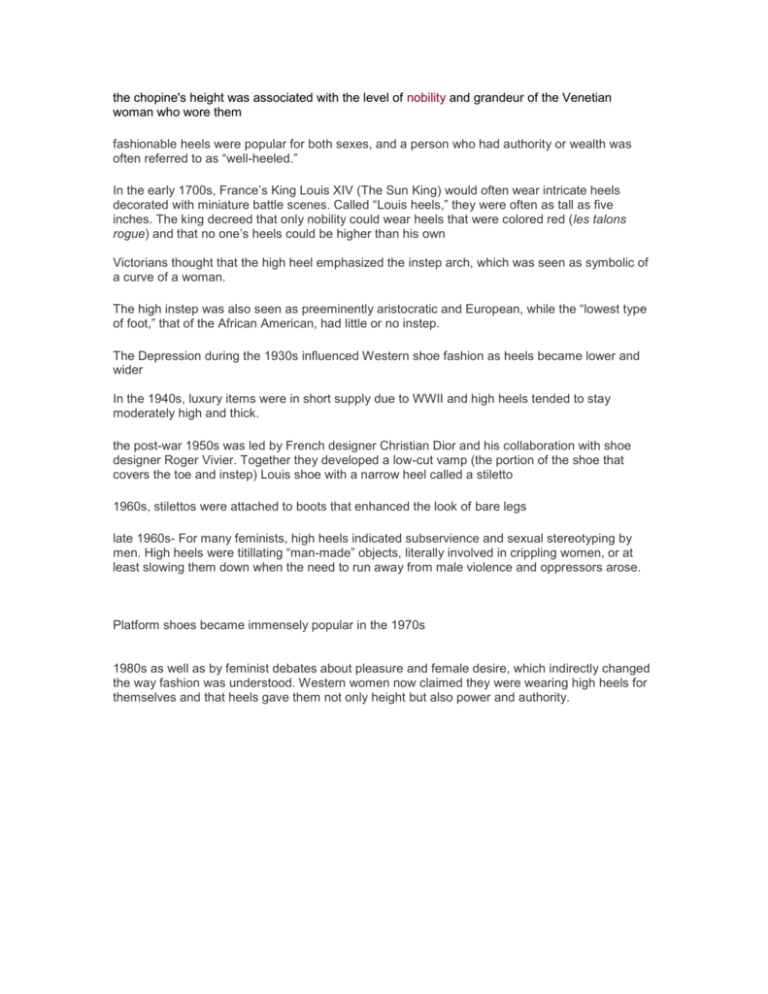
the chopine's height was associated with the level of nobility and grandeur of the Venetian
woman who wore them
fashionable heels were popular for both sexes, and a person who had authority or wealth was
often referred to as “well-heeled.”
In the early 1700s, France’s King Louis XIV (The Sun King) would often wear intricate heels
decorated with miniature battle scenes. Called “Louis heels,” they were often as tall as five
inches. The king decreed that only nobility could wear heels that were colored red (les talons
rogue) and that no one’s heels could be higher than his own
Victorians thought that the high heel emphasized the instep arch, which was seen as symbolic of
a curve of a woman.
The high instep was also seen as preeminently aristocratic and European, while the “lowest type
of foot,” that of the African American, had little or no instep.
The Depression during the 1930s influenced Western shoe fashion as heels became lower and
wider
In the 1940s, luxury items were in short supply due to WWII and high heels tended to stay
moderately high and thick.
the post-war 1950s was led by French designer Christian Dior and his collaboration with shoe
designer Roger Vivier. Together they developed a low-cut vamp (the portion of the shoe that
covers the toe and instep) Louis shoe with a narrow heel called a stiletto
1960s, stilettos were attached to boots that enhanced the look of bare legs
late 1960s- For many feminists, high heels indicated subservience and sexual stereotyping by
men. High heels were titillating “man-made” objects, literally involved in crippling women, or at
least slowing them down when the need to run away from male violence and oppressors arose.
Platform shoes became immensely popular in the 1970s
1980s as well as by feminist debates about pleasure and female desire, which indirectly changed
the way fashion was understood. Western women now claimed they were wearing high heels for
themselves and that heels gave them not only height but also power and authority.

